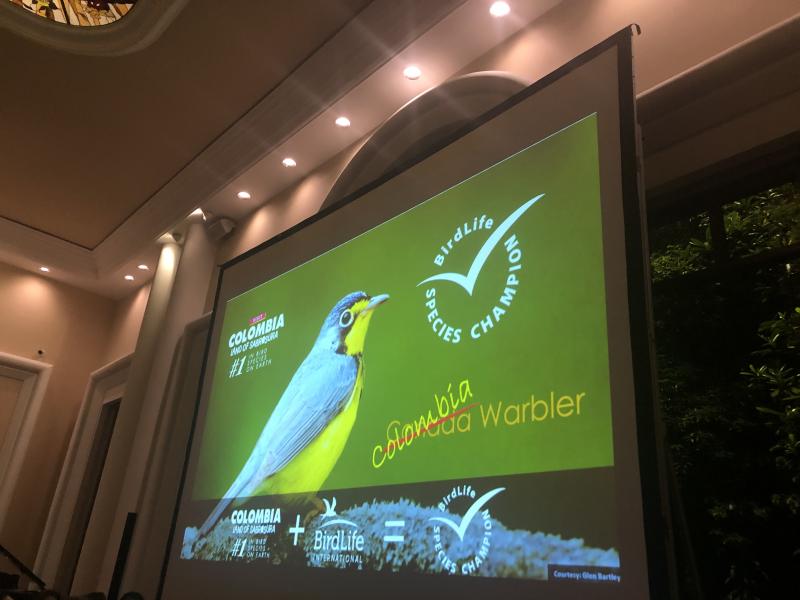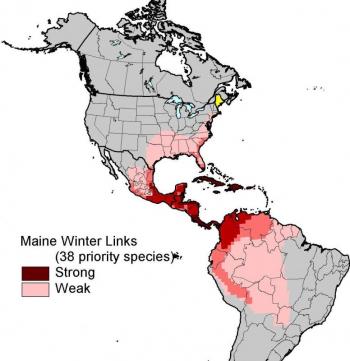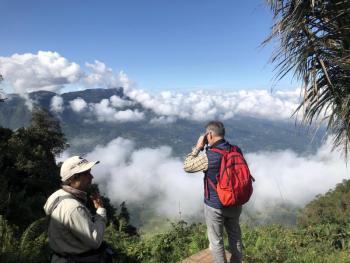One of us (Jeff) had the opportunity to visit a special country this past week, a country where many of Maine’s breeding birds spend the winter. That country is Colombia, where National Audubon had its national board meeting in the city of Bogota. In more and more of the country’s publicity, the Colombian government’s Ministry of Tourism has begun proudly proclaiming Colombia’s reputation as having more bird species than any other on earth.
Scientists have confirmed that Colombia has indeed recorded more bird species—about 1,900—than any other country, although neighbors Peru and Brazil run a close second and third. Making the diversity of species even more astounding is the fact that the majority of them are not migratory visitors but year-round residents, sometimes with very small distributions and highly specialized habitat needs.
Colombia was famous for decades of violent, nightmarish internal conflict that inflicted horrible personal and societal wounds of all kinds. This violence kept away many international visitors, including birders.
But in 2016, a truce was signed and the healing process began. Birding has become a key part of that healing process. Not surprisingly, large numbers of birders have begun visiting Colombia to revel in its treasure-trove of birds and to experience the country’s stunningly beautiful natural areas and amazing cultural heritage. Seeing this surging current of interest, the Colombia government partnered with National Audubon to find a way to use the opportunity to provide economic opportunity across the rural communities that had been the hardest hit by the years of conflict.
Together, Colombia and Audubon developed a series of birding trails in these areas and began a strategic bird guide training program. Through this program, more than 400 people have learned, not only how to identify birds and show them to visitors, but also how to run a business and attend to the needs of international tourists. Through this work, economic opportunities tied to maintaining and protecting nature are becoming more and more available to people in rural communities. Both birds and people benefit as the country moves forward from a difficult past.
At one of the National Audubon meetings, the Colombian vice-minister of tourism proudly presented on what made Colombia the “#1 in Bird Species on Earth,” a slogan they are pitching vigorously. He also highlighted the amazing number of shared migratory species between Colombia and the U.S. and Canada. One of the more regularly seen wintering migrants there is the blackburnian warbler, a warbler that is a common breeder in much of Maine, singing its high-pitched songs from the tops of tall spruces throughout our area. The familiar black-and-white warbler and American redstart of our Maine summers are both regularly seen wintering birds of Colombia. Colombian wetlands ring with the same familiar, mellow “tu-tu-tu” calls of the greater yellowlegs we enjoy during spring and fall migration. The list of shared species goes on.
To highlight this shared bird conservation responsibility, the vice-minister put a slide of another bird we love to see here in Maine, the Canada warbler. But he had crossed out the word “Canada” and overwritten it with “Colombia.” With a twinkle in his eye he pointed out that the species spends more of its annual cycle in the wintering grounds in northern South America than its breeding grounds in Canada and the U.S. Therefore, he said, the bird should be rightly called the “Colombia warbler.”
That name change is probably not too likely to be officially adopted, but it nicely drives home the point of how all of us share a responsibility, across countries and hemispheres, to protect birds and their habitats. Doing so also ensures the people of those regions will have the opportunity to flourish.































